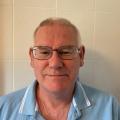INVENTOR, explosives engineer and a doctor of chemistry Dr Sidney Alford has died aged 86.
Dr Alford was the Chairman of Alford Technologies Limited of Trowbridge, a world-leading provider of explosive engineering and explosive charge technology, that he founded in 1985.
A prolific inventor of explosive charges for many different applications, he is considered the pioneer in water projecting disruptors driven by high explosive which are used in bomb disposal and his inventions have been credited in saving countless lives over the years.
Dr Alford was born in the London suburb of Ilford on January 11 1935 and was one of two children. During the early stages of the Second World War he was evacuated with his family to Bournemouth on the south coast where "hit and run" German aircraft raids introduced him to machine gun fire and air-dropped bombs.
Returning to Ilford in 1942, aged seven, he experienced more aircraft bombs, usually dropped under cover of night, and he started a collection of fragments of bombs and of anti-aircraft shells. This sparked a fascination with explosives which remained with him for the rest of his life.
After starting his career as a chemist, as The Troubles escalated in Northern Ireland, he invented the water-lined shaped charge as a better way of blowing IEDs.
In 1976 the MoD arranged for Wallop Industries, now Wallop Defence Systems, to provide facilities for him to develop his inventions, which he had previously had to build in his kitchen and test in his garage.
Dr Alford's findings were ground-breaking at the time, and he continued coming up with new inventions in the course of this research but eventually he received a letter, which he kept with pride in his office lavatory for many years effectively ordering him to stop having any more new ideas since he did not work for The Authorities.
Undeterred, Dr Alford moved to Wiltshire and joined Leafield Engineering Ltd in Corsham where he continued to develop novel explosive charges.
In June 1978, Dr Alford was elected a Fellow of the Institute of Explosives Engineers (IExpE). In mid-1981 he was approached by a retired army officer and his colleague and they formed a new company, Alflex.
Their first operation was to take part in the record-breaking expedition to the Barents Sea which recovered 93 per cent of around five tonnes of gold ingots from the wreck of HMS Edinburgh. During the next few years Dr Alford acquired a great deal of experience in demolition, felling numerous brick, concrete and steel chimneys.
In 1985, Dr Alford started his own company, Sidney Alford Ltd with his wife Itsuko as co-director. He carried out many explosive demolition operations on such steel and concrete structures as bridges and industrial buildings, including the blast furnaces at the Consett Iron Company which closed in 1980.
Over the next few years, he worked around the World in places such as the Persian Gulf, The United States, Scotland, Pearl Harbour in Hawaii, and Laos in south east Asia.
Dr Alford’s invention of the water-lined shaped charge was initially classified as Secret and he was unable to discuss or show it to anyone. In 1987 it was finally declassified by the UK Ministry of Defence and he went on to design a range of charges based on this technology that has been used to defuse countless IEDs and saved many lives around the world.
In 2002, his company was renamed Alford Technologies as his son, Roland, became managing director of the company, with Sidney Alford becoming its chairman. In 2004 the company won the first of two Queen’s Awards for Innovation .
In 2015 he was awarded the OBE in Her Majesty the Queen’s Birthday Honours for services to explosive ordnance disposal and on Tuesday, January 26, a day before his death, Dr Alford was awarded the US Navy’s Distinguished Public Service Award, the highest award available for a civilian.
His son, Roland, said: "Sidney had been looking forward to the event for several months, and due to Covid, the ceremony was hosted on teams where some of his oldest and dearest friends were able to see and speak to him. In many ways, as his health was failing, he had been holding on for the ceremony and it was a wonderful bookmark to a unique life."
Dr Alford leaves a wife, Itsuko, two sons Roland and Xavier, and four grandchildren. His funeral service was held on Monday, February 15 at the West Wiltshire Crematorium at Semington.







Comments: Our rules
We want our comments to be a lively and valuable part of our community - a place where readers can debate and engage with the most important local issues. The ability to comment on our stories is a privilege, not a right, however, and that privilege may be withdrawn if it is abused or misused.
Please report any comments that break our rules.
Read the rules here